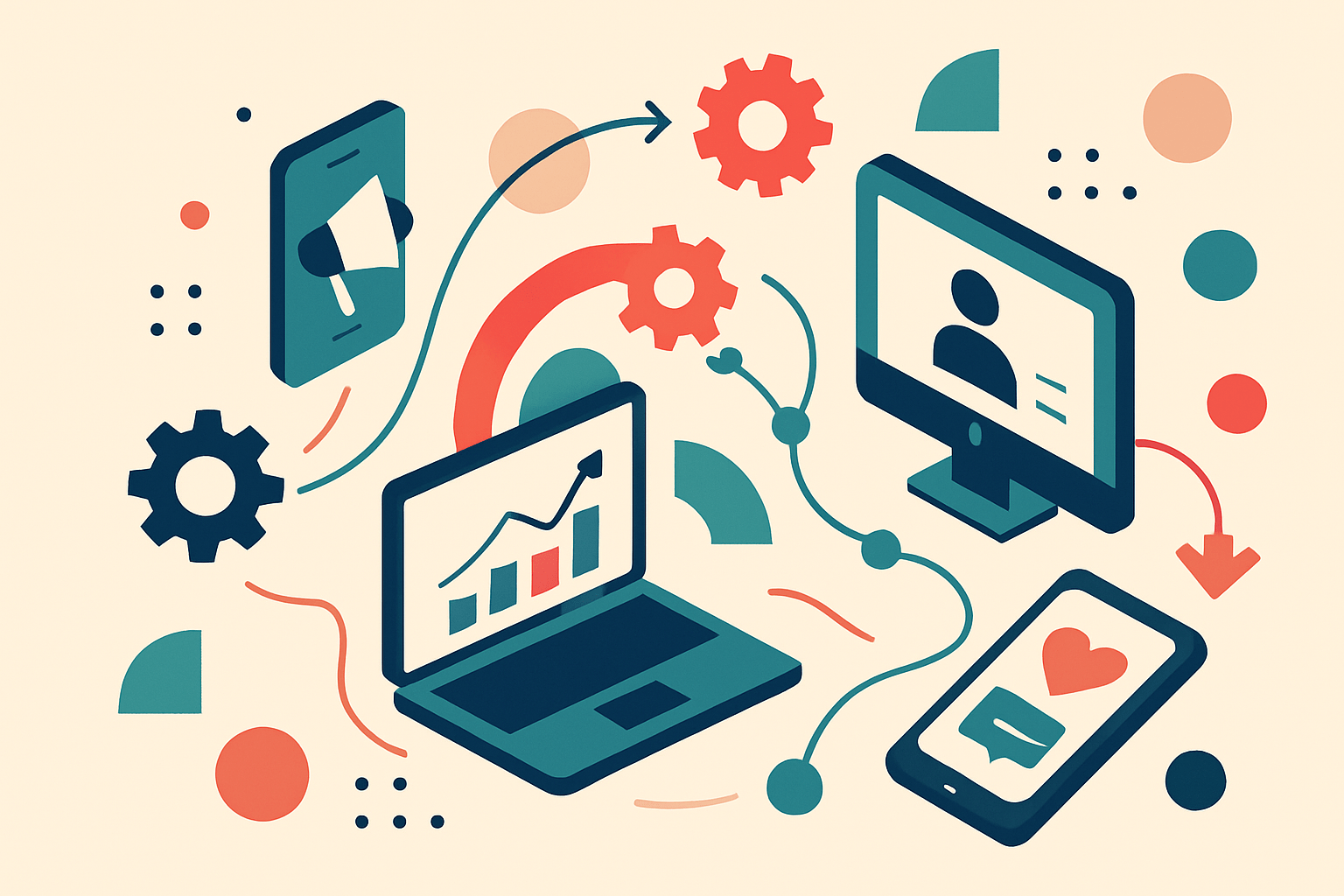
Boost Engagement with Smart Automation Tools
Engage Your Audience Like Never Before
Leverage smart automation tools to elevate your marketing game.
Introduction to Smart Automation Tools
In today’s fast-paced digital landscape, engagement is key to keeping your audience invested. Many creative directors and marketing leaders are turning to smart automation tools as the solution to boost engagement effectively. These tools not only streamline processes but also enhance customer interaction, making it easier to deliver tailored content at the right time. This post will explore how to leverage automation tools to achieve marketing efficiency and greater audience interaction.
Automation tools are designed to ease repetitive tasks, freeing up valuable time for marketers to focus on creative strategies. Imagine a world where you can deliver personalized emails, scheduled social media posts, and targeted ads all with the push of a button. By implementing smart technology in your marketing efforts, you can achieve more with less effort and see measurable results in your engagement metrics.
Throughout this article, we will cover several actionable steps that you can take this week to start seeing real improvements in your customer interactions. Additionally, we’ll provide concrete examples of businesses that have successfully employed these strategies, showcasing proven approaches to boost engagement through automation.
Understanding the Benefits of Using Smart Automation Tools
Smart automation tools offer a wide range of advantages for today’s marketing campaigns. The primary benefit is the increased efficiency in reaching customers. With the right automation tools in place, you can segment your audience based on behavior, preferences, and demographics, allowing for highly personalized marketing efforts.
For example, a leading e-commerce platform utilized automation tools to enhance their email marketing campaigns. By setting up triggered emails based on user behavior, they were able to target users who abandoned their carts. These personalized follow-up emails included promotional codes or reminders, and as a result, their recovery rate improved significantly, leading to an impressive increase in engagement and sales.
In addition to improving customer interaction, smart technology can also track performance metrics effectively. Automation tools often come equipped with analytics features that analyze user engagement in real-time. This data-driven approach enables marketers to understand what resonates with their audience and tweak their strategies accordingly for maximum impact.
Key Features to Look for in Automation Tools
When deciding on the right automation tools for your marketing efforts, it’s essential to look for specific features that can enhance your engagement strategies. First and foremost, consider tools that offer robust analytics capabilities. Understanding your audience’s behavior is critical in crafting targeted content that drives engagement.
Another important feature is multi-channel integration. A good automation tool should allow you to connect various platforms, such as social media, email marketing, and content management systems. This integration ensures a seamless flow of information and audience data across channels, providing a more comprehensive view of customer interaction.
Additionally, look for tools that enable personalized communication. The ability to send tailored messages based on user behavior can significantly impact engagement rates. Automated messages should feel personal and relevant, enhancing the relationship between your brand and your audience.
Challenges and Common Misconceptions about Automation Tools
Despite the numerous advantages that smart automation tools can provide, there are still challenges and misconceptions within the marketing community. One common misconception is that automation leads to loss of the human touch in marketing interactions, making communications feel robotic and impersonal. However, when used correctly, automation enhances the customer experience by enabling personalized engagement at scale.
It’s crucial to view automation not as a replacement for personal interaction, but as a means to enhance it. For instance, using automation for routine tasks allows your marketing team to focus on creative and strategic efforts that require a human touch, such as crafting compelling narratives or engaging with customers directly.
Moreover, many marketers worry that implementing automation tools may require significant resources or training. While there may be a learning curve, most modern tools are user-friendly and designed with intuitive interfaces to facilitate smooth onboarding and adoption.
Implementation: A Step-By-Step Workflow This Week
If you’re ready to harness the power of smart automation tools to boost engagement, follow these straightforward steps this week:
- Assess Your Current Tools: Take stock of any automation tools you are currently using. Identify what is working well and what could be optimized.
- Define Your Objectives: Clearly outline what you want to achieve with these tools. Is it improved email open rates, higher social media engagement, or better tracking of customer interactions?
- Research and Choose Tools: Based on your needs, research available automation tools that align with your objectives. Look for those that emphasize analytics, integration, and personalization.
- Set Up and Integrate: Once you’ve selected a tool, set it up properly and integrate it with your existing marketing platforms. Ensure your systems can communicate effectively.
- Craft Automated Campaigns: Start creating campaigns that leverage automation, focusing on personalization based on customer behaviors and preferences.
- Monitor and Adjust: As you launch automated campaigns, continuously monitor their performance. Use analytics provided by the tools to make data-driven adjustments aimed at boosting engagement.
Framework for Success: Key Performance Indicators
Implementing smart automation tools can lead to significant improvements in marketing efficiency, but it is essential to measure success through Key Performance Indicators (KPIs). Here are a few KPIs that can help gauge the effectiveness of your automation efforts:
- Email Open Rates: Track the percentage of recipients who open your automated emails as a measure of initial engagement.
- Click-Through Rates (CTR): Measure how many users click on the links provided within your automated messages to assess content relevancy and appeal.
- Conversion Rates: Monitor the percentage of users who take your desired action after receiving automated communications, such as making a purchase or signing up for a newsletter.
- Customer Retention Rates: Analyze how well you retain customers over time after implementing these automation strategies. A continuous engagement can indicate success.
Remember to avoid common pitfalls such as over-automation, which can lead to disengaged audiences. Always prioritize the quality of your interactions over quantity, ensuring that your automated messages deliver real value to your audience.
What to do now
Now is the time to take action and implement smart automation tools to boost engagement. Start by taking a closer look at your current strategies and identifying areas where automation can make a difference. Select the right tools, craft personalized campaigns, and monitor their effectiveness using the KPIs discussed. Don’t let the misconception of losing the human touch deter you; embrace the efficiency that smart technology offers while preserving meaningful customer interactions.
Your audience is waiting to engage. By following these steps this week, you will be on your way to transforming your marketing efforts and witnessing significant improvements in customer interaction. Let smart automation tools propel your brand to new heights of engagement today!


